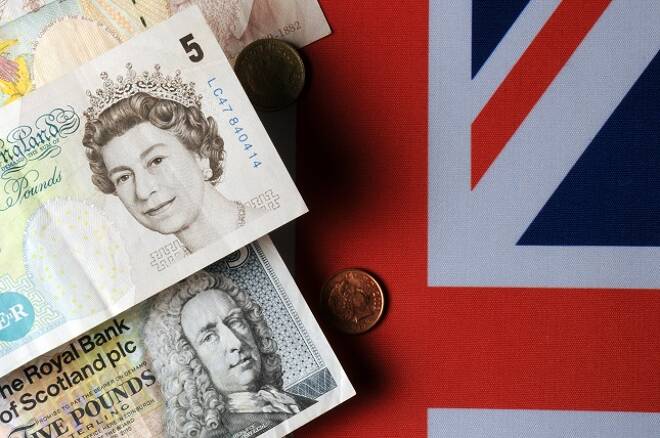Will The UK’s Post-Pandemic Recovery Provide Further Support For The Pound?
By:
The debate over the direction of sterling rumbles on, detractors claiming the gains made have exhausted themselves while supporters point to promising UK fundamentals as a sign that further upside potential remains.
With the most recent GDP figures suggesting a strong post-pandemic recovery remains possible, it is not unreasonable to ask whether sterling does indeed retain the potential to trade higher.
Continued progress with Covid19 vaccinations
A key factor undermining sterling recently has been the concerns expressed over the AstraZeneca Covid19 vaccine, specifically whether restrictions on its use could cause the UK’s vaccination programme to slow, delaying the economic recovery. Recent losses do indeed look largely attributable to this story. But provided the UK public maintains confidence in the vaccine, no material impact on the pace of vaccinations should be felt; and with the Moderna vaccine now also in the UK’s arsenal, there appears no cause for anxiety that the timetable for ending lockdown restrictions will not be adhered to.
Strong recovery on-track, supported by savings-funded consumption
The UK economy is expected to bounce back rapidly once lockdown measures are finally removed, the IMF forecasting 2021/2022 growth of 5.3%/5.1%, compared to 4.4%/3.8% for the euro-zone and 6.4%/3.5% for the US. Better than expected data emerging so far this year suggests growth may be even stronger than this. Two variables will be key signals of the possible potency of this recovery: the strength of the propensity to consume, potentially evidenced by the 12thApril reopening of non-essential retail premises; and the willingness to run down the excess savings stock built up during the pandemic to fund an excess level of consumption.
Estimated to be worth around £150bn, a run-down in savings towards pre-pandemic levels would certainly turbo-charge any economic recovery. The BoE expects only around 5% of this savings stock to be spent, a forecast predicated on rising unemployment necessitating higher precautionary savings to be maintained and on most of these savings having been accrued by retired and higher income households, with traditionally a lower marginal propensity to consume. However, given that there will almost certainly be some element of a spending catch-up, on both goods and social activities, the suggestion is that a larger proportion of this savings stock will be spent, boosting economic activity, and potentially bringing forward a normalisation of fiscal and monetary policy.
A more supportive monetary policy
The direction of UK monetary policy has flipped this year. Negative interest rates are no longer seen and the next move in policy settings is now forecast to be a tightening. Although current metrics are expected to remain on hold until at least Q4 2022, a stronger recovery could potentially see the need for monetary tightening to begin sooner as rising inflationary pressures demand a policy response.
Downside risks overplayed
Of course, negative factors remain. Other countries will eventually catch-up with the UK with Covid19 vaccinations, while UK lockdown measures are more restrictive than some other countries (for example, the US). The public finances remain weak, and concerns endure over the NI protocol and Scottish/Welsh independence movements. And longer term, the extent to which UK/EU trade is hindered by Brexit could also pull sterling lower. However, a strong post-pandemic rebound should provide some offset to these negatives, while as the UK continues to sign trade deals with faster growing economies than the EU around the world, pivoting business towards these new partners could see trading volumes potentially rising higher than had Brexit not occurred.
Potential for upside gains remains
The assertion is that strong reasons for remaining positive on sterling continue, the current bout of weakness being seen as caused by short term uncertainties rather than anything more structural. The economic recovery remains on track and as this materialises so the pound will find further support. Add to this the fact sterling remains weak on an historical basis, then the potential for further upside gains appears to still be strong.
‘’This material is provided for informational purposes only and does not constitute financial advice, investment advice, trading advice or any other advice or recommendation of any sort offered or endorsed by Equiti Capital. This material is not, and is not intended to be, a “research report”, “investment research” or “independent research” as may be defined in applicable laws and regulations worldwide. Please see the full disclaimer here: https://www.equiticapital.co.uk/media/11057/disclaimer.pdf ’’
About the Author
Stuart Colecontributor
Following graduation Stuart worked as an economist at the Bank of England, working in various roles. With a passion for macro-economics and the markets, he has worked in various institutions in the City before joining Equiti in 2020. He has been published regularly, including by the Bank of England and the OECD.
Advertisement
